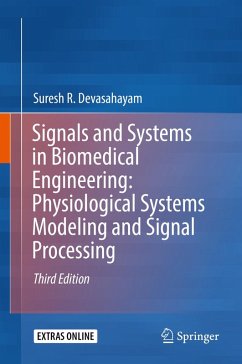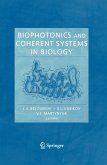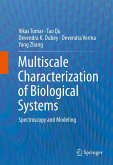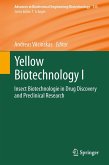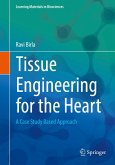Physiology is a set of processes that maintain homeostasis, and physiological measurement is a means of observing these processes. Systems theory and signal processing offer formal tools for the study of processes and measured quantities.
This book shows that systems modeling can be used to develop simulations of physiological systems, which use formal relations between the underlying processes and the observed measurements. The inverse of such relations suggest signal processing tools that can be applied to interpret experimental data. Both signal processing and systems modeling are invaluable in the study of human physiology. Discussing signal processing techniques ranging from filtering and spectrum analysis to wavelet analysis, the book also includesGraphs and analogies to supplement the mathematics and make the book more accessible to physiologists and also more interesting to engineers.
Physiological systems modeling helps in both gaining insights andgenerating methods of analysis. This book shows how numerical computation with graphical display, haptics and multimedia can be used to simulate physiological systems. In this third edition the simulations are more closely related to clinical examination and experimental physiology than in previous editions.
Detailed models of nerve and muscle at the cellular and systemic levels, and simplified models of cardiovascular blood flow provide examples for the mathematical methods and computer simulations. Several of the models are sufficiently sophisticated to be of value in understanding real world issues like neuromuscular disease. The book features expanded problem sets and a link to extra downloadable material, and simulation programs that are solutions to the theory developed in the text are also available.
This book shows that systems modeling can be used to develop simulations of physiological systems, which use formal relations between the underlying processes and the observed measurements. The inverse of such relations suggest signal processing tools that can be applied to interpret experimental data. Both signal processing and systems modeling are invaluable in the study of human physiology. Discussing signal processing techniques ranging from filtering and spectrum analysis to wavelet analysis, the book also includesGraphs and analogies to supplement the mathematics and make the book more accessible to physiologists and also more interesting to engineers.
Physiological systems modeling helps in both gaining insights andgenerating methods of analysis. This book shows how numerical computation with graphical display, haptics and multimedia can be used to simulate physiological systems. In this third edition the simulations are more closely related to clinical examination and experimental physiology than in previous editions.
Detailed models of nerve and muscle at the cellular and systemic levels, and simplified models of cardiovascular blood flow provide examples for the mathematical methods and computer simulations. Several of the models are sufficiently sophisticated to be of value in understanding real world issues like neuromuscular disease. The book features expanded problem sets and a link to extra downloadable material, and simulation programs that are solutions to the theory developed in the text are also available.
Dieser Download kann aus rechtlichen Gründen nur mit Rechnungsadresse in A, B, BG, CY, CZ, D, DK, EW, E, FIN, F, GR, HR, H, IRL, I, LT, L, LR, M, NL, PL, P, R, S, SLO, SK ausgeliefert werden.

